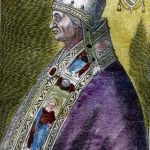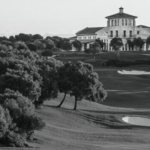Gerald Templer, a boy destined for military honours if ever there was one, was born in 1898. After joining up as a boy soldier he rose rapidly through the ranks to become a Field Marshal. He was a fighting soldier as opposed to a headquarters mapman, and commanded the 6th Armoured Division in World War II.
He was vice-chief of what used to be called the Imperial General Staff when there was still an Empire needing a general staff, and then he was made High Commissioner in Malaya (1952 – 54) during the high moments of the Malayan Emergency.
In fact the Emergency festered a good deal longer. It lasted from 1948 to 1960. It was a Communist uprising encouraged by minority Chinese resentment of Malay political dominance in the New Federation of Malaya. Trained Chinese guerrillas who had fought the Japanese engaged in a series of deadly assaults on Malayan planters, their estates and homes. Locel police work and the armed farmers did their best, but by 1953 the insurrection had blown up into a full-scale guerrilla war.
The Communists led by Chin Peng and supported by their own efficient supply network formed the Malayan Races Liberation Army, causing severe disruption in the early years of the campaign. The world’s press took little notice, and the Americans did not realise that an almost exact replica would later cause the Vietnam War (of which the world’s press took a great deal of notice – how odd!)
Gerald Templer arrived to direct the British and Commonwealth forces in 1952. The insurgents were gradually defeated by employing new jungle tactics inspired by the successes of Chindit commander Orde Wingate.
Put simply, if the Chinese were lightly clothed, lightly armed and swift, Templer made sure his soldiers were the same. This was real jungle warfare, where fitness, speed, accuracy and intelligence were considered more important than ninety pounds of equipment on your back and a big repeating rifle. Templer arranged for his troops to carry light sub-machine guns and .38 calibre revolvers and automatics, machetes and a new super-light radio communication system. They wore all-purpose, camouflaged green denim overalls and used mosquito nets. For the cold jungle nights they had a recent innovation called the Parka, an all-purpose camouflaged jacket with a zip and a thick lining inside, plenty of deep pockets for maps, packets of rations etc. The British Army had never seen anything like it, and the soldiers had learned a great deal from fighting the Japanese. The SAS regiments had been raised by the Stirling brothers during the War, and Templer thought they had the right idea.
He broke the Chinese supply system, used the loyal Malay and Indian population, forming committees in each district and listening to sensible advice from these people who knew and understood the country. There was a peaceful transition to independence in 1957, but the Emergency was not officially declared over until 1960.
Templer later became Governor of the Mediterranean island of Cyprus, where again he had to adapt British soldiers to terrorist tactics, this time against the EOKA. He died full of honours in 1979.











Leave A Comment